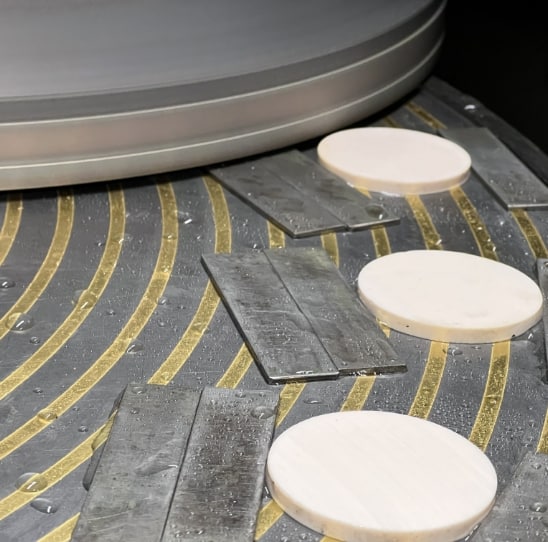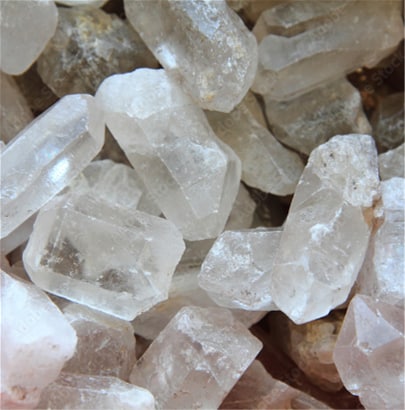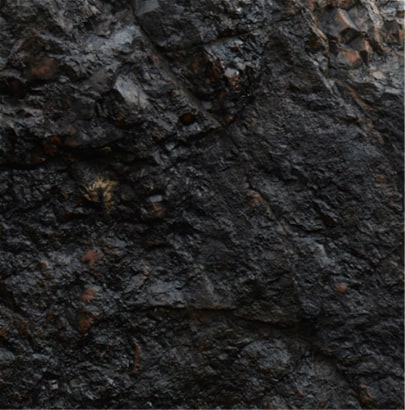Guide to Surface Grinding
Surface grinding is a common finishing technique that produces smooth surface textures with high precision. It creates finishes that are both functional and attractive, making it a dependable technique for a wide range of applications.
Quartzite Processing offers precision surface grinding services that meet the needs of even the most demanding projects. Depending on your particular needs, we can grind high-tolerance parts to a perfect surface finish.
What is Surface Grinding?
Surface grinding is a common machining process where a spinning wheel coated in rough particles flattens or smooths a surface by removing chips of non-metallic or metallic material. In doing so, this process accurately grinds down the surface to give the material a more refined look.
Surface grinding equipment consists of three main components: an abrasive wheel, a chuck, and a rotary or reciprocating table. The chuck is a work-holding device that secures the material as it is being worked on. There are two main types of chucks:

Magnetic Chuck
This type of chuck is used when working with ferromagnetic workpieces. If you’re working with a non-ferromagnetic workpiece, a machine vise made from ferromagnetic steel can be placed on the magnetic chuck.

Vacuum or Mechanical Chuck
Non-metallic and non-ferromagnetic workpieces
can be held in place by vacuum or mechanical means.
During the surface grinding process, it’s important to consider the type of material being worked on as well as the material of the grinding wheel. It’s also important to note that the shape of the grinding wheel will transfer to the part like a reverse image. Depending on your particular needs, grinding wheels are available in various shapes to achieve custom geometries.
Surface Grinding Capabilities
Surface grinding has the ability the produce the desired surface finish with a high degree of accuracy. The level of precision depends on the usage and type, but in most cases, the process can achieve tolerances of +/-0 .0001” or +/- 0 .002 mm.
Most modern surface grinders are semi-automated, with the ability to pre-program certain factors, such as the number of passes, spark-out, and cut depth. Once the machinery is set up, the surface grinding process can carry out with very little operator intervention.
Learn More
Advantages of Surface Grinding
The surface grinding process offers a wide array of benefits that make it desirable for several industries and applications. Its key advantages include:
Ability to produce high levels of surface finish and accuracy
Requires the application of less pressure to work
Produces a smooth, refined surface
Can be used to machine hard materials
Ability to work at high temperatures
Can cut any type of metal or non-metallic material at high speeds
Ability to produce accurate dimensions
Cost-effective
Surface Grinding Methods
To meet a range of needs, various types of surface grinding methods are available. These include:
Horizontal-spindle grinders, commonly called peripheral grinders, are ideal for high-precision work on tapered or angled surfaces, as well as slots or recessed surfaces. With this method, the flat edge of the wheel contacts the piece. This machine is used to ground components such as pistons, connecting rods, bearing races, and pins.
Vertical-spindle grinders, commonly called wheel-face grinders, are ideal for removing material quickly. With this method, the grinding wheel face is lowered onto the material surface. Vertical-spindle grinders are commonly used to grind stators, rotors, gears, wafers, inner plates, inner rings, stops, and spacers.
Double-disc and single-disc grinders are available in both vertical and horizontal spindle configurations. Disc grinders have a larger area of contact between the workpiece and the grinding surface, and they can grind both sides at the same time. Common applications for disc grinders include rotors, spacers, plates, gears, and washers.
Materials We Use In Surface Grinding
At Quartzite Processing, Inc., we are leaders in precision ceramic grinding. With in-depth knowledge about the various materials we can work with, our team can deliver top-quality parts that meet your needs. We can machine the following materials:

1 Quartz
As one of the most recognized materials, quartz is ideal for abrasives due to its very high hardness level. This material also features good resistance to chemicals and heat.

2 Ferrite
This material combines metal such as zinc, barium, nick, or manganese with iron oxide. Common applications for machining ferrite include electric motors that use ferrite as insulation, rods for ultrasonic wave production, and thermal sensing switches.

3 Alumina (Aluminum Oxide)
Also known as aluminum oxide, alumina is in the technical ceramic oxide group and functions as an advanced refractory. It’s possible to form a variety of shapes using this material via sintering and consolidation techniques.
4 Silicon Carbide
Silicon carbide is a crystalline compound consisting of carbon and silicon that combine to produce a hard material used in many applications. Grinding wheels, sandpapers, and cutting tools often contain silicon carbide.

5 Glass
This solid and transparent material appears in many everyday applications. It consists of limestone, sand, and other raw materials that manufacturers melt to form glass.

6 Microwave Absorbing Materials
Microwave absorbing materials, including polyiron, are magnetically loaded epoxy solutions consisting of plastic material combined with metal. They are highly machinable, making microwave absorbers popular in many applications.

7 Dielectric Materials
Dielectric materials are non-metallic and non-conductive materials used to store electrical charges.
Surface Grinding Services at Quartzite Processing
Surface grinding can enhance the surface of various materials with very high accuracy, making it a popular technique across several industries and applications. With the help of the right equipment and expertise, you can make sure that your project is completed with the utmost quality and precision. Quartzite Processing is an industry-leading provider of precision ceramic grinding services. Our engineers have the experience and knowledge to help you achieve your desired results. Get in touch with us today to learn more about our surface grinding services or request a quote for your next project.



